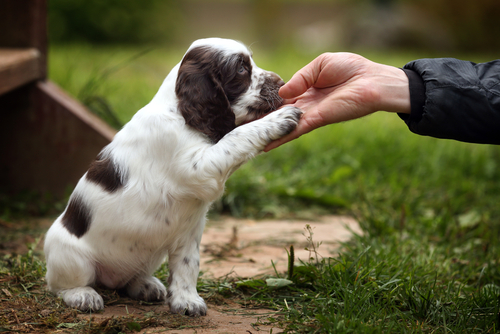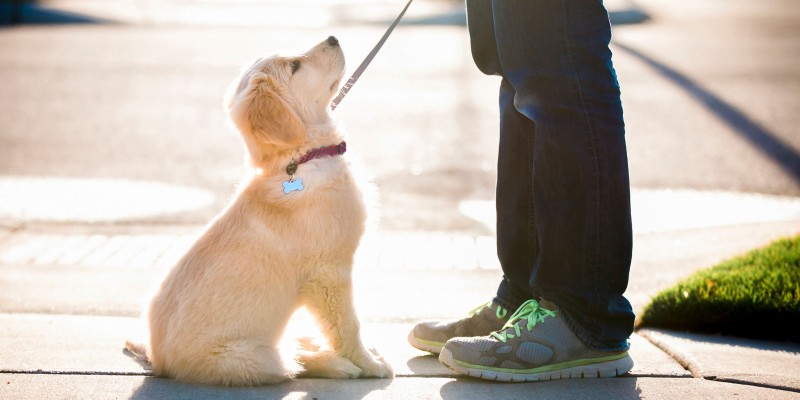Puppy Training Techniques: Teaching Basic Commands for a Happy Pet
Puppy Training Techniques: Teaching Basic Commands for a Happy Pet
Blog Article
Leading Young Puppy Training Methods to Guarantee a Well-Behaved Family Pet
Efficient young puppy training is vital for growing a mannerly companion, and different techniques can substantially affect a canine's development. As we explore these techniques even more, it comes to be clear that the success of pup training hinges on a mix of approaches that can transform your animal's actions in impressive means.
Favorable Support Techniques
Using positive support methods is important for efficient young puppy training, as it motivates desired habits with benefits as opposed to penalty. This method takes advantage of the all-natural knowing processes of pet dogs, enhancing etiquette by providing immediate and tangible benefits, such as deals with, praise, or playtime. By linking positive outcomes with certain actions, pups are most likely to duplicate those actions in the future.
Rewards ought to be provided promptly after the desired behavior takes place to develop a clear connection in the puppy's mind. Additionally, differing the types of benefits can maintain a young puppy's rate of interest and inspiration throughout the training process.

Uniformity in Educating Commands
Keeping uniformity in training commands is crucial for strengthening the lessons learned through favorable support methods. Pet dogs prosper on regular and predictability, so using the same spoken commands and hand signals for specific habits is essential. This harmony aids young puppies recognize what is anticipated of them, decreasing confusion and irritation for both the pet and the instructor.

Timing likewise plays a significant duty in uniformity. Commands ought to be supplied without delay during training sessions and followed promptly by positive support, such as deals with or praise. This prompt action assists solidify the association between the command and the wanted actions.
Integrating uniformity into training sessions will produce a stable knowing environment, advertising quicker mastery of commands. Inevitably, a well-structured method cultivates a strong bond in between the puppy and its proprietor, leading to an extra loyal and well-behaved pet dog.
Socialization With Various Other Pets
Socializing with various other animals is crucial for a young puppy's growth, as it helps them discover ideal behaviors and interaction abilities in diverse social contexts. Early communications with different pets can significantly influence a young puppy's personality and adaptability in different scenarios. When puppies are subjected to a selection of pets, they end up being extra confident and much less fearful, which can stop possible behavior concerns later on in life.

In addition, observing body movement during interactions is vital. Educate your pup to acknowledge signals from other pets, such as indicators of playfulness or pain, promoting mutual regard and understanding. Routine socialization not only boosts your young puppy's social skills yet likewise contributes to their total wellness, creating an extra harmonious living environment. Finally, prioritizing interactions with various other animals will produce a all-round and socially proficient canine.
Pet Crate Training Advantages
Identifying the various benefits of crate training can wikipedia reference substantially enhance both the young puppy's and proprietor's experience. Crate training provides a safe and secure environment for young puppies, guaranteeing they feel safeguarded when laid off. This feeling of safety and security can significantly decrease anxiousness and stress levels for both the family pet and the proprietor.
Furthermore, pet crates function as a useful housebreaking tool. Pups normally avoid staining their resting location, therefore encouraging them to hold their bladder up until they are let outside. This instinct can accelerate the house-training procedure, cultivating excellent habits early on.
When unsupervised,Crate training also aids in handling a young puppy's habits - puppy training. By giving a marked room, proprietors visit this website can prevent destructive behaviors, such as eating on furnishings or entering hazardous compounds. Additionally, cages can be helpful during travel, offering an acquainted room that can aid relax a young puppy in new atmospheres.
Last but not least, developing a dog crate routine encourages freedom, permitting pups to find out just how to be alone without fear. On the whole, crate training is a reliable technique for promoting serenity, self-control, and safety, bring about a well-adjusted, well-behaved pet.
Leash Training Basics
Leash training is an essential facet of responsible pet dog ownership that makes certain a pleasurable and secure walking experience for both the puppy and its owner. Correct leash training starts early, ideally throughout the puppy's socializing period. When out in public., this training assists establish great behaviors and promotes positive actions.
To begin, select a comfortable collar or harness that fits your pup well. Attach a strong chain, guaranteeing it is not too long, as this can cause drawing and erratic habits. Beginning in a quiet atmosphere to lessen distractions and slowly present your puppy to new environments.
Use favorable support strategies, such as deals with and appreciation, to urge your pup to stroll beside you. If your puppy pulls, quit strolling and wait for them to return to your side prior to proceeding.
Furthermore, integrate short training sessions with enjoyable disturbances to construct your pup's emphasis. With devotion and determination, chain training will certainly cause a well-mannered companion, making walks delightful for both the owner and the puppy.
Final Thought
In conclusion, utilizing effective young puppy browse around these guys training techniques is critical for establishing a well-behaved pet dog. Generally, these methods collectively advertise an unified relationship between puppies and their proprietors.
As we explore these methods better, it ends up being clear that the success of pup training pivots on a combination of approaches that can transform your pet's actions in amazing methods.
Utilizing positive support strategies is essential for efficient pup training, as it motivates wanted actions with benefits rather than punishment.Crate training likewise aids in taking care of a young puppy's actions when unsupervised.Leash training is a fundamental element of responsible pet dog ownership that makes certain a pleasurable and secure strolling experience for both the young puppy and its owner.In verdict, utilizing efficient young puppy training methods is essential for establishing a well-behaved animal.
Report this page